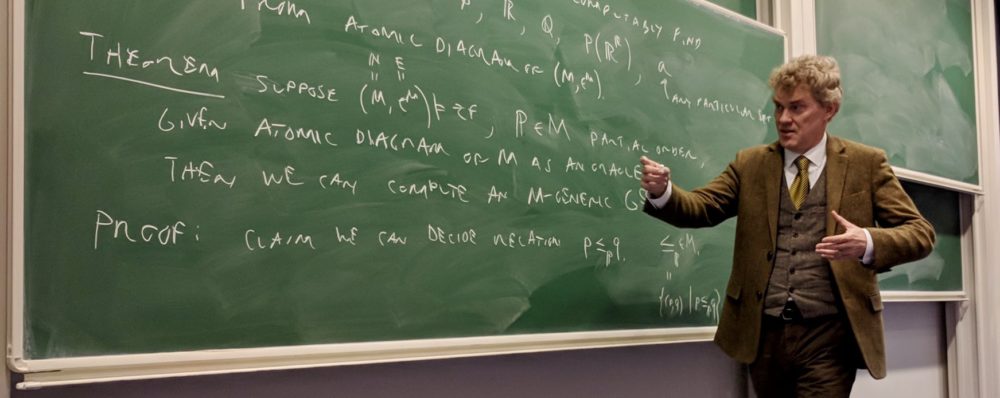 This will be a talk for specialists in philosophy, mathematics and the philosophy of mathematics, given as part of the workshop Metamathematics and Metaphysics, June 15, 2013, sponsored by the group in Mathematical Logic at Fudan University.
This will be a talk for specialists in philosophy, mathematics and the philosophy of mathematics, given as part of the workshop Metamathematics and Metaphysics, June 15, 2013, sponsored by the group in Mathematical Logic at Fudan University.
Abstract: Much of the debate on pluralism in the philosophy of set theory turns on the question of whether every mathematical and set-theoretic assertion has a definite truth value. A traditional Platonist view in set theory, which I call the universe view, holds that there is an absolute background concept of set and a corresponding absolute background set-theoretic universe in which every set-theoretic assertion has a final, definitive truth value. I shall try to tease apart two often-blurred aspects of this perspective, namely, to separate the claim that the set-theoretic universe has a real mathematical existence from the claim that it is unique. A competing view, the multiverse view, accepts the former claim and rejects the latter, by holding that there are many distinct concepts of set, each instantiated in a corresponding set-theoretic universe, and a corresponding pluralism of set-theoretic truths. After framing the dispute, I shall argue that the multiverse position explains our experience with the enormous diversity of set-theoretic possibility, a phenomenon that is one of the central set-theoretic discoveries of the past fifty years and one which challenges the universe view. In particular, I shall argue that the continuum hypothesis is settled on the multiverse view by our extensive knowledge about how it behaves in the multiverse, and as a result it can no longer be settled in the manner formerly hoped for.
The talk will engage with ideas from some of my recent papers on the topic:


